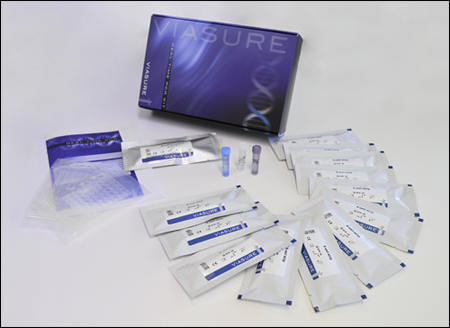
VIASURE Real Time PCR Detection Kits
Bocavirus

Description
VIASURE Bocavirus Real Time PCR Detection Kit is designed for specific identification of human Bocavirus in respiratory samples from patients with signs and symptoms of respiratory infection.
This test is intended for use as an aid in the diagnosis of Bocavirus infection in combination with clinical and epidemiological risk factors.
DNA is extracted from specimens, multiplied using Real Time amplification and detected using specific primers and a fluorescent reporter dye probe for Bocavirus.
Specifications
Information
Human Bocaviruses (HBoVs) belong to the Parvoviridae family and are believed to be important causative agents of respiratory tract infections in young children. All HBoVs are divided into four genotypes, HBoV1–HBoV4 based on nucleotide divergence of VP1, or the nonstructural gene and nucleotide capsid region.
HBoVs are highly prevalent in co-infections with other pathogens. Clinical manifestations range from mild upper respiratory tract infections to bronchiolitis, and lower respiratory tract diseases, such as pneumonia. The common symptoms are fever, cough, acute otitis media, tonsillitis and conjunctivitis, sinusitis, and rhinorrhea.
Of the 4 known genotypes, HBoV-1 is detected in the respiratory tract, while HBoV-2, HBoV-3 and HBoV-4 have been primarily detected in stool. Consequently, HBoV1 is linked with upper and lower respiratory tract infections. HBoVs are transmitted by person-to-person contact.
Bocaviruses are small non-enveloped single-stranded DNA viruses that contain a genome of about 5.3 kb. The genome includes three ORFs, which encode two non-structural proteins, NS1 and NP1, and two capsid proteins, VP1 and VP2. Amino acid variations are associated with VP1/VP2, while NS1 and NP1 are found to be conserved regions and, therefore, are widely used as targets for diagnostic tools.
Currently, the methods of detecting HBoV include conventional PCR and Real-Time PCR because of the limited success of serological and viral culture techniques. Between them, Real-time PCR assays have been shown to be the most sensitive and specific diagnostic tool.
